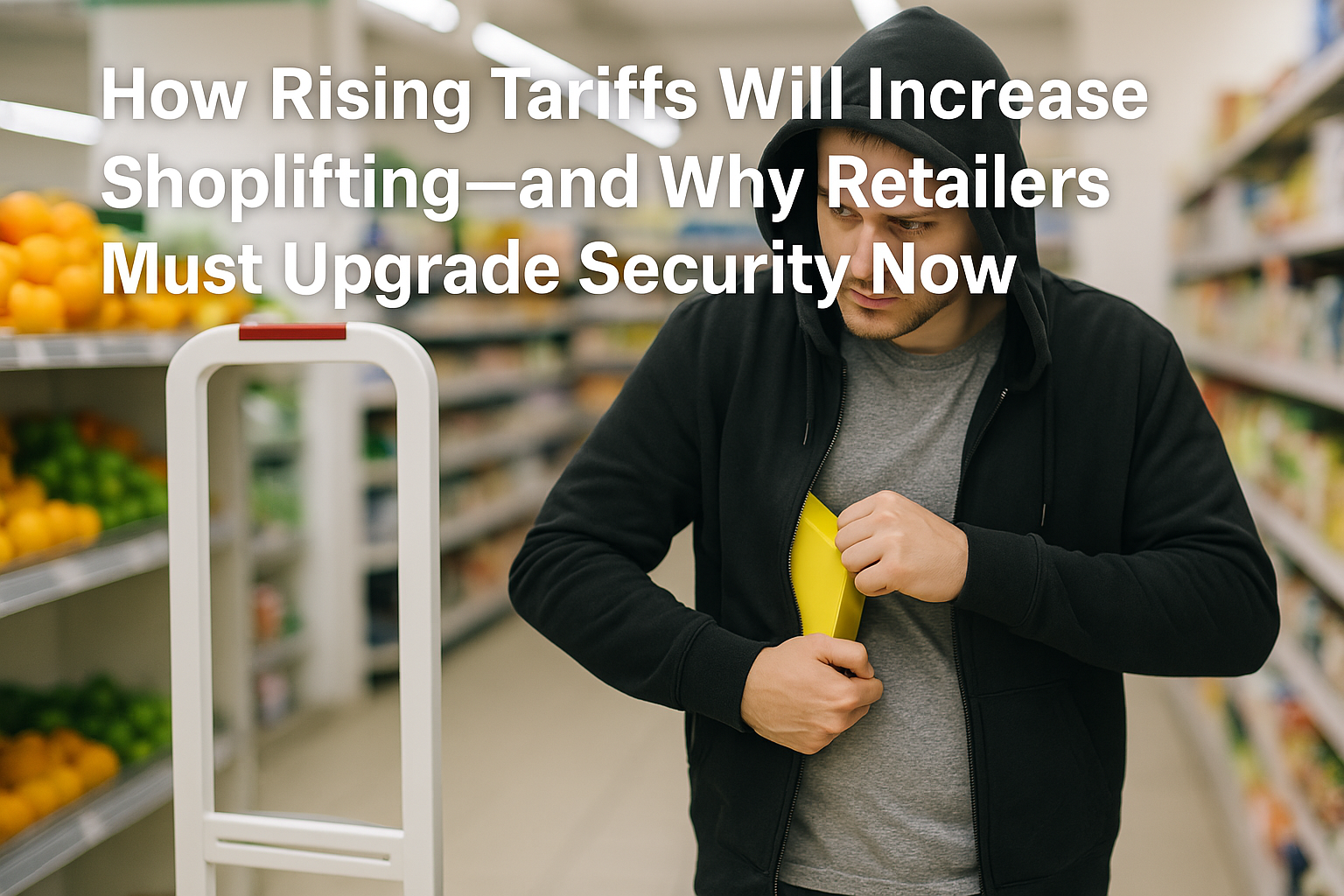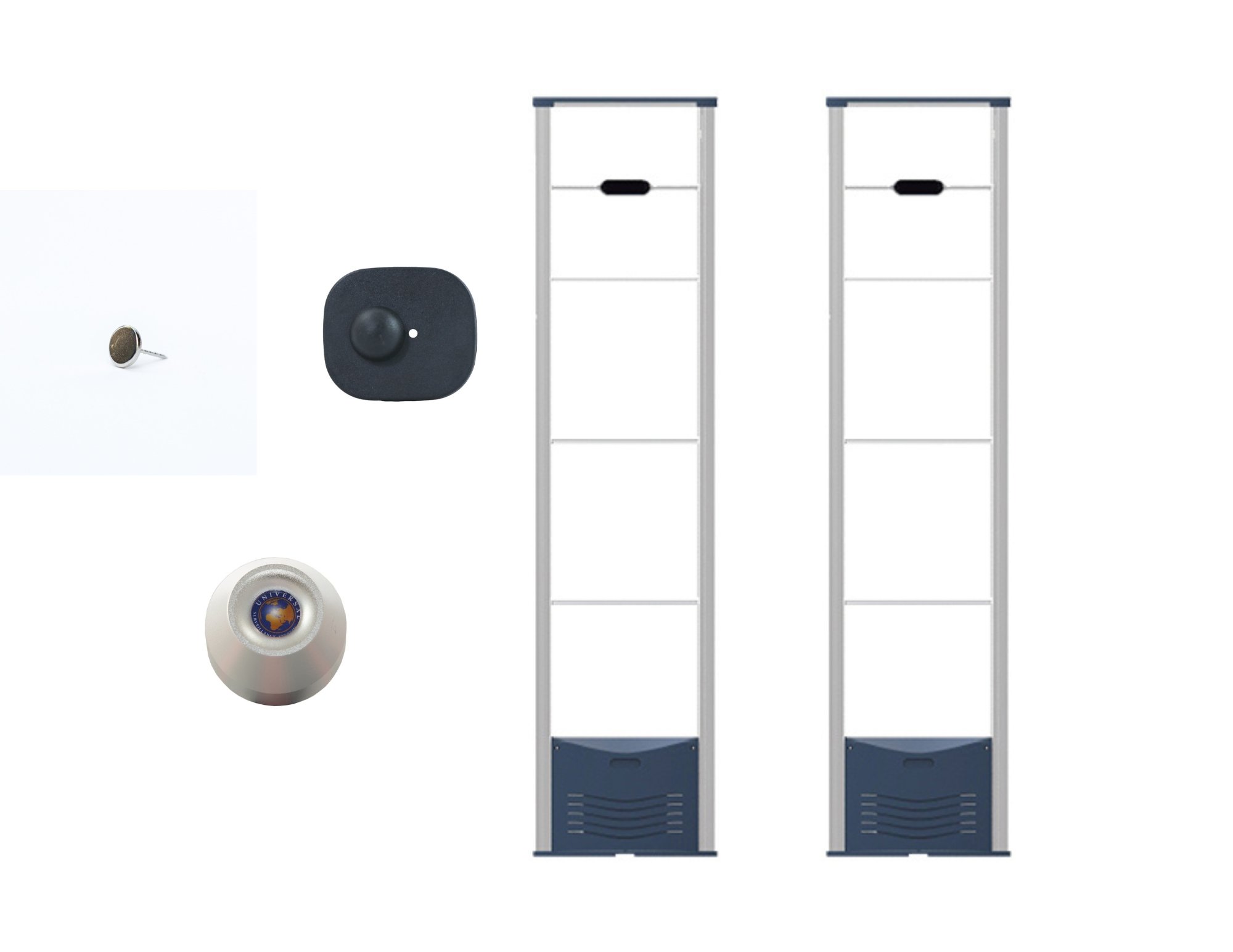In early April 2025, the United States enacted sweeping new tariffs, dramatically raising the cost of importing everyday goods—from fruits and vegetables to cars, sneakers, and electronics. With tariffs as high as 54% on imports from China, 20% from the EU, and similar hikes for other countries, the landscape of American consumerism is about to shift—fast.
But while headlines focus on sticker shock and diplomatic trade spats, there’s a deeper story brewing: shoplifting is about to surge, and retailers—especially grocers, electronics stores, and apparel chains—need to brace for impact.
Let’s break this down:
What Are Tariffs and How Do They Work?
At their core, tariffs are taxes placed on imported goods. When a product crosses the U.S. border, Customs and Border Protection collects a fee from the importer. That fee—often passed along to consumers—raises the price of the item on the shelf.
For example, if a pair of shoes from China cost $100 to import, and a 54% tariff is applied, the cost instantly jumps to $154 before even hitting the store. And that doesn’t include the retailer’s markup.
The rationale behind tariffs is to make imported goods less attractive, ideally driving more domestic production and consumption. But in a globalized economy where supply chains stretch across continents, the effects aren’t so tidy.
The 2025 Tariff Shock: What’s Changing Now
On April 5, a 10% blanket tariff goes into effect on virtually all imported goods. But that’s just the beginning.
China: 54% tariffs on a vast range of products
EU: 20%
India and Japan: Between 24% and 26%
Cars, auto parts, electronics, footwear, toys, alcohol, and produce are all targeted
Even low-cost goods from Shein and Temu—long shielded by the de minimis exemption for imports under $800—will now face duties of up to $50 per item by June 1.
The result? Prices on everyday essentials will spike, especially in sectors where the U.S. is heavily dependent on imports—like produce (60% imported), footwear, toys, and consumer electronics.
Why These Tariffs Will Drive a Spike in Shoplifting
We’ve seen it before: when prices rise rapidly, and wages don’t keep pace, some consumers turn to desperation, not checkout lines. These new tariffs could spark one of the largest shoplifting surges in years, for a few key reasons:
1. Prices Will Rise Almost Immediately
Retailers have limited options: raise prices or absorb costs. In this case, most companies are expected to pass tariffs directly to consumers. The result? A $2.99 bunch of bananas could jump to $3.99. A $1,000 smartphone might now retail for $1,300+.
For price-sensitive shoppers—especially in low-income areas or amid still-persistent inflation fatigue—the incentive to "self-checkout without checking out" becomes stronger.
2. Shrinkflation Has Already Frustrated Shoppers
Consumers are already annoyed at getting less for more. Tariffs could worsen this trend. A 12-pack of socks from a foreign brand may now cost what a 24-pack used to—making it even more tempting to slip a few items past sensors.
3. Organized Retail Crime (ORC) Will Ramp Up
High-value goods like electronics, designer shoes, and alcohol are ripe for organized theft rings, especially when resale margins improve due to rising MSRP. The higher the price, the bigger the black-market payday.
4. Food Theft Will Surge
Tariffs on produce will hit groceries fast. Think tomatoes, avocados, and bell peppers—already expensive, now more so. Grocery stores, historically less reliant on theft deterrents like EAS tags, will now need to reconsider.
What Retailers Must Do: Invest in EAS (AM and RF) Systems
With prices rising and shrink risk ballooning, it’s time for retailers of all sizes to get serious about loss prevention. Enter EAS systems, specifically AM (Acousto-Magnetic) and RF (Radio Frequency) technologies.
🔒 How EAS Works
AM Systems (often used in clothing and electronics): Tags are deactivated or removed at checkout. If not, alarms trigger at the door.
RF Systems (often used for packaged goods): Stickers or embedded tags activate alarms if not removed or deactivated.
📦 What Should Be Tagged Now?
Retailers should start tagging:
Packaged fruits and vegetables (especially premium, high-theft items like avocados, berries, organic produce)
Meat and dairy
Alcohol
Sneakers, apparel, and accessories
Electronics, gadgets, and home goods
Toys and back-to-school items
💰 Why This Is a Smart Investment
While EAS systems require upfront investment, they pay for themselves quickly in high-theft environments. With tariffs inflating retail values across the board, even small-scale theft can become a major drag on profit margins.
Final Thoughts: Security Is the New Margin Saver
The latest round of tariffs may be pitched as a tool to revive domestic manufacturing, but in the short-to-medium term, they will drive up prices, suppress spending, and widen the retail security gap.
If retailers don’t act fast, the shoplifting wave could drown already fragile profit margins.
The winners of this next phase in the retail economy won’t just be those with great inventory or low overhead—they’ll be the ones who protect what they have with smart, scalable security systems.
Tariffs are here. Prices are rising. Now’s the time to tag it before they bag it.
Want help choosing the right EAS system for your retail business? Drop a comment or contact us for a free consultation on AM vs RF solutions tailored to your store layout and inventory.


